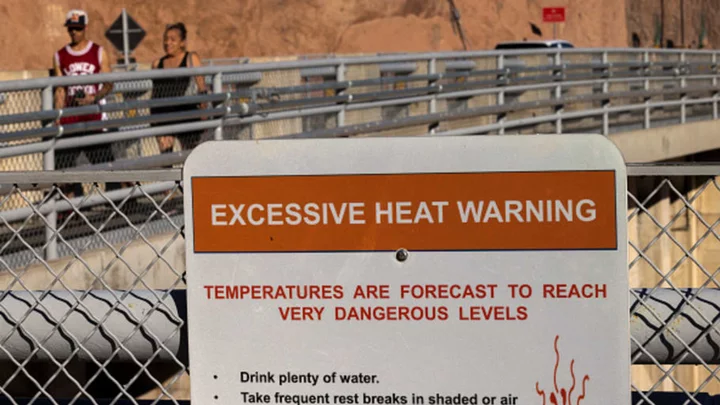If you think this summer has been extremely hot, you’re not wrong. According to the National Oceanic and Atmospheric Administration (NOAA), Earth experienced its hottest days on record during the week of July 2–8, 2023, with the global average temperature peaking at 17.18°C (62.92°F). In the southwestern U.S., a persistent heat dome is bringing record highs to places already familiar with extreme heat. Phoenix, Arizona, may break its record of 18 straight days with temperatures over 110°F, set in 1974; the heat and humidity combined for a heat index of 125°F in Houston and other Texas cities in June.
In simple terms, a heat dome occurs when warm oceanic air becomes trapped in Earth’s atmosphere by high pressure. In years (like 2023) when El Niño or La Niña warms the western Pacific, hot air begins to build over the ocean and pushes east across land. A high pressure “dome” traps the hot air, and it sinks toward the ground. This dome blocks the heat from escaping, thus making everything hotter.
Although heat domes are common, some are more severe and can cause widespread problems.
In 2021, the normally cool Pacific Northwest dealt with high heat for weeks due to a heat dome. Cities in Washington and Oregon set triple-digit temperature records of more than 110°F. The heat overwhelmed hospitals with weather-related emergencies and resulted the deaths of more than 60 people.
Heat domes can even cause wildfires and disrupt marine life. The heat dome in western Canada in 2021 killed over a billion marine animals along the Pacific coast, according to the Guardian.
A 2021 study in the journal Nature Climate Change [PDF] predicts that climate change will amplify the frequency and intensity of extreme heat. Think about investing in a great (energy-efficient) air conditioner, because there may be more heat domes in the coming years.
A version of this article was published in 2021; it has been updated for 2023.
This article was originally published on www.mentalfloss.com as What Is a Heat Dome?.









